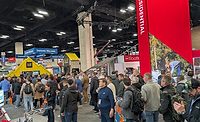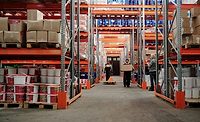The Role of Roofing Distribution in FORTIFIED Homes
With customers seeking FORTIFIED roofs throughout the nation, now is the time to become a leader in strengthening homes

Roofing contractors are the boots on the ground when it comes to protecting homes from storms. Just as important is the role roofing distributors play in creating homes that can bounce back quicker from severe weather.
Recently, the Insurance Institute for Business & Home Safety [IBHS] celebrated a milestone of 50,000 FORTIFIED designations. FORTIFIED is a reroofing method tested by the IBHS that is shown to withstand winds up to 130 mph and heavy rains better than typical installations. It’s a voluntary “beyond-code” program that requires roofers to use specific techniques and materials.
Those 50,000 roofs didn’t get there by chance. A combination of state-funded incentives along with contractors and roofing distributors doing their part to spread the word, are helping homeowners better protect their most significant investment.
"We are turning the tide and seeing a marked shift, with more than half of all FORTIFIED designations being earned in the last three years,” said Roy Wright, president and CEO of IBHS. “Yet, there is more work to do, especially in areas without modern building codes where it falls on the individual homeowner to lean in and take the lead on resilience."
Fred Malik, managing director of IBHS’ FORTIFIED program, said the organization is happy to work with distributors to educate them on the specifics of FORTIFIED and, in turn, help contractors with homeowners seeking resilient roofs.
“Once we go through that education process, we find that distributors and wholesalers become an important tool for us to reach their customer base,” Malik said.
Malik said the ways distributors have assisted customers include providing literature, hosting lunch and learn training programs, and even helping customers identify which of their products meet FORTIFIED requirements.
“That makes it easier for the roofer to say, ‘Okay, I need some of this underlayment; I need some of these shingles because I am putting together a FORTIFIED roof,’” Malik said. “It takes a little bit of the pressure off the roofer to make sure that they're specifying good products that align with the program … and we’re starting to see more and more of that.”
Distributors can get ahead of the curve, with more states looking into FORTIFIED standards. While there isn’t a need to secure inland roofs from hurricanes, the increased frequency of severe storms is causing people to seek robust solutions.
“The way things are progressing now — with derechos, severe thunderstorms — we’re seeing a lot more people recognizing now that inland, there’s a significant risk when it comes to wind and wind-driven rain,” Malik said. “There's going to be more folks asking for FORTIFIED, and it's not just going to be in hurricane-prone areas. You have an opportunity to get out there and be a leader in that space.”
Incentives to FORTIFY
Some states have made it easier for homeowners to seek out a FORTIFIED roof, giving contractors and distributors a leg up. Alabama is one of the largest supporters of the program, with more than 80% of all FORTIFIED designations in the state. The program is supported by the Strengthen Alabama Homes grant plan, created in 2011 to encourage homeowners to roof their homes with the FORTIFIED standard.
"In Alabama, we know first-hand the devastation a storm can bring to a family and a community," Alabama Gov. Kay Ivey said in a statement. "We also know that every home FORTIFIED is a life changed; it's a family that's safe and whole; it's a community that can recover quicker from the physical damage a powerful hurricane or tornado brings and from the financial impacts that follow those storms.”
A similar program in neighboring Louisiana, the Louisiana Fortify Homes Program, is also in place. Lawmakers recently indicated they will pursue $20 million for the program this year. In 2019, North Carolina also adopted a Strengthen Your Roof program, providing up to $6,000 for customers to install a FORTIFIED roof.
“Stronger roofs means fewer insured losses and lower rates,” Louisiana State Rep. Mike Huval said during an April press conference. “This program will help a lot of folks resist storm damage in the near future while potentially reducing residential property insurance costs for the entire state in the longer term.”
Other programs include:
- Mississippi, Louisiana, Oklahoma and North Carolina offer wind mitigation incentives for properties constructed to the FORTIFIED standard.
- In Minnesota, legislation is under consideration to establish a Strengthen Minnesota Homes program.
- State agencies in Louisiana and Iowa require homes rebuilt after storms to be constructed to the FORTIFIED standard.
- Key stakeholders in Kentucky are using FORTIFIED to repair and rebuild homes following recent devastating tornadoes.
- Building codes in Florida closely mirror FORTIFIED Roof and FORTIFIED Gold.
Malik said one of the hurdles with introducing the FORTIFIED program, especially when there are grant programs to support it, is reassuring people that it is legit and not a scam. To that end, roofing distributors can help inform contractors about FORTIFIED.
“One way we work with suppliers and distributors is to just educate them on what the program requires,” he said. “They think, ‘Nobody's giving us free money to pay for a slightly more expensive roof that's gonna be more durable,’ and that includes the suppliers, so we have to get out there, and we have to make sure that they understand that, yeah, these are real programs that are designed to put these products on roofs.”
Looking for a reprint of this article?
From high-res PDFs to custom plaques, order your copy today!











